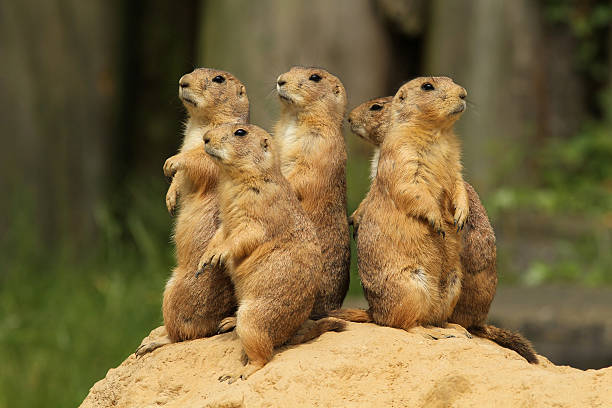Decoding the Language of Prairie Dogs: Unveiling the Complexity of Rodent Communication
In the vast landscapes of North America, a fascinating form of communication exists that has long been overlooked. The prairie dog, a type of burrowing rodent, is renowned for its complex social structure and intriguing vocalizations. This article takes a deep dive into the intricate language of prairie dogs, providing an exciting exploration into the world of animal communication.

A Glimpse into the Prairie Dog’s World
Prairie dogs, despite their name, are not dogs at all but are a type of rodent belonging to the family Sciuridae. They are native to the North American grasslands and live in highly organized colonies, often referred to as “towns,” which can span hundreds of acres and house thousands of individuals. These social creatures have a hierarchal structure and display a range of behaviors that are remarkably human-like.
Deciphering the Prairie Dog Language
The communication skills of prairie dogs have intrigued scientists for decades. Studies have revealed that prairie dogs use a sophisticated form of vocal communication, comprising a variety of calls that convey specific information. Alarm calls, for instance, vary according to the type of predator approaching, its size, speed, and even color. This level of detail in their communication suggests a complex language that goes beyond basic instinctual responses.
Recent Developments in Prairie Dog Linguistics
Recently, researchers at Northern Arizona University have made significant strides in decoding the prairie dog language. Using computer algorithms to analyze the acoustic patterns of prairie dog calls, they discovered that these rodents have a surprisingly advanced system of vocal communication. Their calls can describe not only predators but also non-threatening animals, human beings, and even inanimate objects.
The Impact of Prairie Dog Communication on Animal Linguistics
The discovery of such a rich language in a rodent species challenges our understanding of animal communication. It opens up new avenues for research into the linguistic capabilities of other animals, particularly those in the rodent family. Moreover, it contributes to the ongoing debate about the evolution of human language, reinforcing the idea that complex communication systems can develop in various species.
Prairie Dog Communication: Implications and Future Research
The study of prairie dog language not only broadens our understanding of animal communication but also has practical implications. Knowing how prairie dogs warn each other about specific threats can help in the development of more effective conservation strategies. As for future research, the focus might shift towards understanding how prairie dogs learn and adapt their language, offering further exciting insights into this intriguing form of communication.
In conclusion, the prairie dogs’ advanced system of communication underscores the rich complexity of the animal kingdom. The more we learn about these fascinating creatures, the more we appreciate the depth and diversity of life on our planet. Where once we saw simple rodents, we now see skilled communicators, social organizers, and survivors. As we continue to decode the language of the prairie dogs, we deepen our understanding of our world and our place within it.




